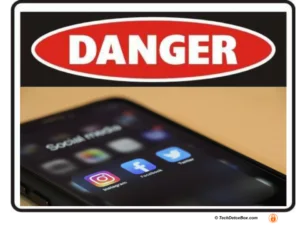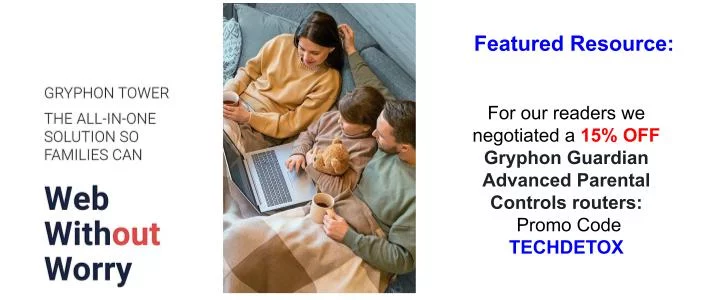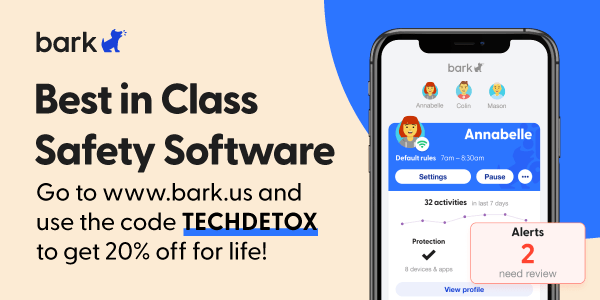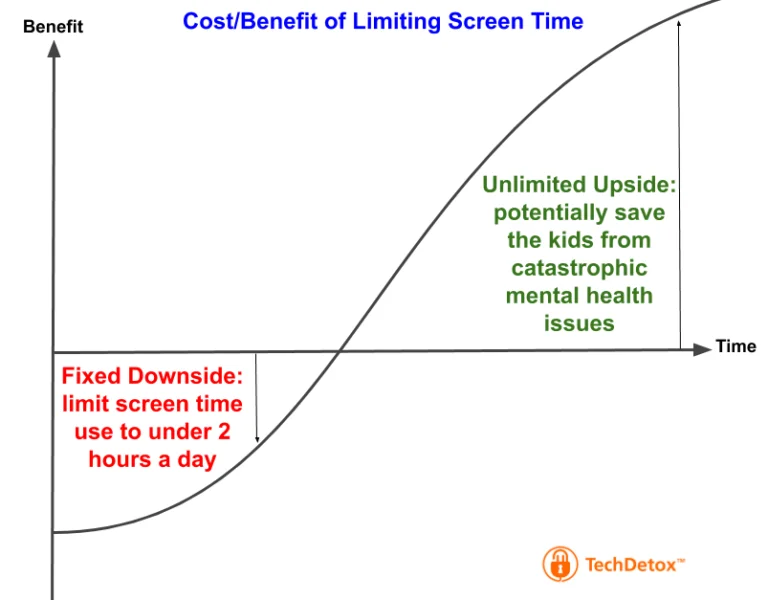
Social media kills young people. It is responsible for teen suicide epidemic.
The shocking truth is that we knew about this since the 18th century.
Every time there is another heart-breaking teenage suicide in our area, I get a lengthy email from the school along the lines “how to talk about it with your children”. The implication is that young and vulnerable children need to be thoroughly informed about the self-inflicted death of somebody just like them.
Let me ask a controversial question – do they really need to know?
As a mother, I say – NO.
When my kids are not anxious, I do not volunteer to stress them out.
They are not anxious for one simple reason – they don’t know what happened. They are clueless. What they do not know has no power to hurt them.
They don’t know because our kids have no social media. No smart phones. No Instagram, Snapchat, TikTok, or whatever. We decided to keep it that way until they are 16. They don’t watch the news and do not read news websites. Predictably, they are not interested in those, they prefer to use their limited screen time playing Minecraft and watching cat videos on YouTube. Those can be stupid – but not traumatic.
Local websites would publish the tragic news with little details, ending the article with the words “the family asks for privacy”. Unfortunately, there is none. Everyone knows exactly what happened. A storm of social media speculation is unleashed as people in the community struggle to deal with their grief – first and foremost kids.
Assemblies at school discussing the event would follow – I ask school administration to opt our kids out. A flurry of prevention resources to share with children is recommended by school counselors – I don’t share. They want parents to have a long talk with the children about the tragedy. Which we don’t.
In the last few years, almost every little town in our area lost children to suicide epidemic. In our own town there had been 5. Ours is a small community, and these tragedies crush everyone.
With social media, there is no escape from the trauma.
It sounds counterintuitive, but we prefer to keep our kids ignorant of tragic news. To preserve their innocence and joy. To prolong their childhood. If we are blamed for keeping children “unprepared” for the real world, so be it.
If “being informed” leads to a host of mental health issues, it’s more rational to stay uninformed.
The only way our kids would “be informed” is from personal conversations with their friends. The old-fashioned face-to-face kind at the lunch table. Where serious topics rarely come up – the available airtime is usually taken by discussing video game strategies.
They simply don’t know. And we do not volunteer to tell them – unless they ask.
And if they ask, we answer and explain – again, in person, looking them in the eye, what a horrible and irreversible decision taking a life is: yours or someone else’s. But as long as children remain blissfully unaware about a tragedy they could do nothing about, I say, it is better that way.
We believe that talking about suicide prevention only makes sense when kids already have anxiety, depression, and suicidal ideation. But when they don’t, talking about suicide might do more harm than good.
It might plant an idea where there was none before.
Enter human psychology.
The Werther effect, or Copycat Suicide
In 1774 a famous German writer Johann Wolfgang von Goethe published a novel “The Sorrows of Young Werther”. The main character suffers from unrequited love and takes his own life. The novel became a bestseller and made Goethe rich and famous – an equivalent of a modern day social media influencer. It also resulted in a number of suicides across Europe among young people who read the book – often committed for the same reasons, and in the same fashion. The problem became so bad, several countries banned the novel.
The term “Werther effect” was coined by a researcher David Phillips in 1974. He demonstrated that immediately following the front page suicide story the suicide rate increases dramatically in those areas where the story was published. The more the publicity, the greater the number of later suicides. Depressed people who have read the newspaper have killed themselves in imitation. People who otherwise would go on living.
“Hearing about a suicide seems to make those who are vulnerable feel they have permission to do it,” Phillips said.
Another name for the Werther effect is copycat suicides. Wikipedia defines a copycat suicide as “an emulation of another suicide that the person attempting suicide knows about either from local knowledge or due to accounts or depictions of the original suicide on television and in other media”.
Apparently, suicide is contagious, like a virus. It spreads through the community. Through the school district. Through the nation. And with every teenager having 24/7 access to the toxic suicide publicity of global social media, it spreads through the world.
Dysfunctional and destructive behavior is documented, broadcasted, and even glorified on social media. There are many negative side effects of screen time – suicide epidemic happens to be the worst of them.
Left alone with their phones, teens often access disturbing information online. Falling down the rabbit holes of dark content into copycat behaviors of self-harm. It happens to the vulnerable – those already depressed and susceptible to dark influences.
What if the vulnerable never knew about the darkness? If they were innocent like kids in ages past – would they be immune from it? Would it ever occur to them to throw their life away?
If the teens who killed themselves did not have smartphones, would they still be alive today?!
Suicidal Ideation and Availability Bias
There is a shortcut in our brain called the availability bias: to save mental energy when making a decision, we rely on whatever comes to mind first. And what usually comes to mind is something that we recently heard or read about: it’s readily available in the brain and easily retrieved.
In extreme cases this cognitive bias becomes a dark form of inspiration: kids read about harmful behaviors of other kids on social media and think:
“If someone has done it, I can do it too”.
It becomes an option. An option that is suddenly front and center in a young person’s mind because the information about it was so available.
Which makes a smart phone in the hands of a depressed teenager as dangerous as a loaded gun.
Teens are known to be impulsive and take disproportionate risks. That’s why a mere suggestion they saw online might lead them to an irreversible decision of impulsively throwing away their very life – without the chance to say “I didn’t mean it!” later.
The Principle of Social Proof
In his classic book Influence: Psychology of Persuasion a leading social psychologist Robert Cialdini introduced a principle of social proof as the powerful force influencing human behavior. The law of social proof states:
The greater the number of people who find any idea correct, the more the idea will be correct.
We imitate each other. We are persuaded by the actions of other people – and none more so than teenagers when it comes to other teenagers. They copycat. Even when the behavior in question is destructive. When they don’t know how to deal with their pain, they look to other kids for clues. A twisted form of peer pressure and conformity with the “trend” after reading about other teens’ harmful behavior on social media can literally kill them.
This is the dark side of the principle of social proof.
Unfortunately, kids’ exposure to this sensational negativity is magnified because shock value of such news contributes to traffic as the information is forwarded, shared, and commented on. And traffic translates to money for the “attention merchants”.
Shock is a great amplifier of traffic, so it contributes quite nicely to the bottom line of social media companies.
With online gossip there is no clear line between good and evil content. Parents install a protective layer of parental controls, but even the best of them are full of holes, like a sieve – bad stuff just slips through.
Negativity reigns on the internet – just read a string of comments on any controversial issue for a few minutes and assess how that makes you feel. Before the onset of the digital age, news of suicides were often suppressed by traditional media like newspapers thanks to the ethics of journalism. Professional news outlets of the past were well aware of the moral implications. Well, teenagers – or anyone these days – do not read newspapers. They get their news from social media updates, where journalistic ethics does not apply. Privacy does not exist there either. It’s impossible to avoid gruesome news and destructive “advice” from evil “influencers”.
So kids are repeatedly exposed to and traumatized by the unfiltered information of other teenagers’ suicides and the horror of “how-to” tutorials. In their country. In their state. In their own little town.
Cialdini’s concept of social proof also helps explain why copycat suicides are so similar to the original publicized suicide: we are powerfully influenced by people JUST LIKE US. Teens are rebellious only when it comes to their parents. With peers, they conform. Young people imitate other young people because they see their stories and their pain in kids JUST LIKE THEM, on the same social media. And take the same action.
In a twisted way, the principle of social proof makes a self-inflicted death a socially acceptable course of action.
Cialdini’s book was published in 1984. Before every teenager had a smartphone with instant access to self-harm stories everywhere, algorithmically promoted because of their shock value that translates to profits.
How Bad Is It?
Center for Decease Control statistics on suicide are clear: significant increasing trend from 2007 on. What happened in 2007? The iPhone was launched. Facebook, Twitter, and others all came into existence around the same time. 2007 marks the official start of the digital age. And since about the year 2012, when smartphones became widely available to children, statistics of suicides for ages 10-14 became truly scary. Here is a quote from the CDC website: “The suicide rate for persons aged 10–14 nearly tripled from 2007 to 2017”.
CDC survey of high school students revealed that 17% contemplated suicide. That survey was from 2013. Things got a lot worse since then: CDC Director Robert Redfield said in a webinar that suicides and drug overdoses have surpassed the death rate for COVID-19 among high school students. This has been the human cost of lockdowns and school closings.
Young people’s mental health has been seriously compromised by isolation. Couple that with around the clock exposure to toxic and negative digital media that benefits from fear-based attention, depression, and anxiety – and you have a recipe for disaster.
Multiple studies have linked screen time and social media in particular to an increased risk of suicide. A sizable portion of Dr. Jean Twenge’s book iGen: Why Today’s Super-Connected Kids Are Growing Up Less Rebellious, More Tolerant, Less Happy – and Completely Unprepared for Adulthood–and What That Means for the Rest of Us is devoted to the subject.
Frances Jensen, MD writes in her book The Teenage Brain: “The rates are frightening when you think about access to the Internet, where information about how to commit suicide is sadly and distressingly available for anyone to read”.
Teenagers are fascinated by death, and digital media is happy to profit from it. Following a release by Netflix of a controversial show 13 Reasons Why about teen suicide, a 2017 study published in JAMA Internal Medicine found an increase in suicide related Internet searches, including a 26% increase in searches for “how to commit suicide“, an 18% increase for “commit suicide” and 9% increase for “how to kill yourself.” Two years later JAMA Psychiatry published research on an association of increased suicides in 10- to 19-year-olds following the release of 13 Reasons Why, confirming suicide contagion effect the show had on young people, especially girls.
The usual pattern of copycat suicides is several high-schoolers taking their lives within several months. Kids from the same state, county, town, or school, whose profiles are linked by the same social networks. There is no way to NOT publicize a suicide in an environment like this: kids report these news to each other. Most are deeply wounded and are grieving together – via the same social media channels. Posting tributes on the Facebook wall of a friend who is no longer there. But some, who might be already struggling with depression, are led onto the same tragic path.
The more they discuss it, the more likely it becomes. The principle of social proof is applied to life or death decisions.
The Werther effect is more powerful today than it was in the 18th century. Human nature did not change, but ubiquitous access to suicide publicity online puts a lot more young people in danger than Goethe’s novel ever did in the 18th century.
Can Anything Be Done?
What is then the best suicide prevention program? Isolate kids from social media until they are much older and their brain is more mature. Facebook, Instagram, Snapchat, TikTok and this entire industry is unlikely to start censoring teenage communication any time soon – they are too busy with the political mess they helped to create.
I believe that kids should be kept away from traumatizing content online. There is enough evidence that exposure to such information can lead to anxiety, depression, and in extreme cases, self-harm. Parents try to protect children from drugs, drunk driving, and unprotected sex. Suicidal ideation has to be on the same list.
Prevention is the only way, as there is no cure for death.
How do we know when it is time to worry? Warning signs are not obvious in teens – are they depressed, or just absorbed in their phones? A normal teen and a teen contemplating suicide will look and behave exactly the same. I knew a 15-year old girl who took her life. I saw her every week. She seemed perfectly normal. And then she was gone.
I had my dark moments at age 15. But today I don’t even remember what I was anxious about. It certainly did not matter at age 25 or 35. Things change. You change – every 10 years or so you become a different person with a different set of priorities. All you need to do is just…wait. Let time take its course, and the problem that seemed to be the end of the world will simply disappear on its own.
Life moves on and presents you with other options. Checking out is missing out – on everything wonderful your future has to offer, if you just give it a chance.
Any young person who expressed suicidal ideation would benefit from reading this blog post by Tim Ferriss about his personal experience, also published in his bestselling book Tribe of Mentors. Note that the author, well acquainted with the principles of digital marketing, intentionally put “how to commit suicide” in the URL to make sure that people who enter this horrible phrase into a search engine will come across his article, written for the exact opposite purpose – to convince them to keep on living.
His idea worth sharing with troubled young people is that killing yourself is like strapping on a suicide vest, walking into a room full of everyone you love – your family, friends, pets – and blowing yourself up. That’s what your death does to your loved ones. It’s the most cruel thing you could do.
Kids spend so much time online and alone, parents need to be extra vigilant to know what’s going on with them. Physical isolation used to be easy to spot before the smartphones became ubiquitous, but now isolation is the new normal. With the COVID-19 restrictions it is the law of the land – which in case of children’s mental health is a crime against humanity. More kids die from isolation-induced suicide than from COVID, even CDC admitted that. Which makes the government a mass murderer of children. So much for democracy.
Given the isolation’s assault on mental health, it’s more important than ever to drag kids away from screens on a regular basis. A parenting rule of thumb: the majority of waking time should be spent in the real world. Being bored is not an excuse. Go read a book.
In the times that we live in, it’s more likely that kids would experience psychological trauma in the digital space, not in the real world. The American Psychiatric Association recommendations for children in the aftermath of trauma include:
“Limit exposure to television and social media content about the disaster; repeated exposure to frightening or intense images increase distress”.
“Limit exposure”. Case closed.
One of the things BARK safety software monitors is suicidal ideation. As of 2021, it has detected 213 thousand severe self-harm situations.












